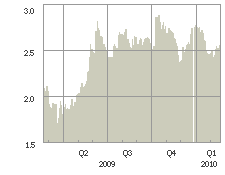The place where I normally park cash is in ING Direct, which has been a mainstay financial institution for myself for a very long time. When they first opened, they were by far and away the best place to park cash. Now they are a mediocre offering of the many online products that are available out there. I am guessing that they achieved their desired level of deposits and have achieved their desired debt-to-equity ratio with their residential mortgage offerings.
ING Direct hasn’t contaminated their customer experience by spamming their customer base with too many useless services, but this encroachment to simplicity has been eroding at a faster pace as of late – see my post about RSP loans, for example. It is simplicity that has caused me to stick around with ING Direct instead of shopping for other services. However, that time has now come.
So today I sent in a cheque to Ally, which used to be known as GMAC. Obviously since GM tarnished their brand with their bankruptcy filing and investing money in an institution that shares the same name with a bankrupt entity doesn’t inspire much confidence, they changed their name in 2009. In Canada, they are run by a firm called ResMor Trust Company, which otherwise does mortgages. In any event, they are CDIC insured and this means that the taxpayers of Canada will be picking up the guarantee for deposits up to $100,000.
Since I will not be depositing more than $100,000 in Ally, the safety issue of the institution is more or less mitigated.
Their peak offering is a savings account which delivers 2% interest (which is subject to change at anytime), but since this is significantly higher than ING Direct’s offering at 1.2%, it is a trivial process to click a few mouse buttons and transfer the money. Every dollar counts.
As interest rates rise, it will be interesting to see the spread between these two institutions since they are competing for the same bucket of capital from Joe Saver.

